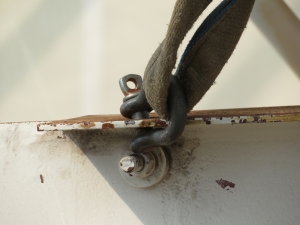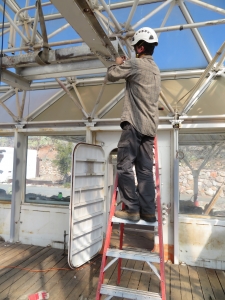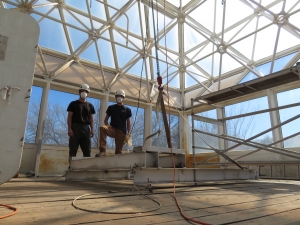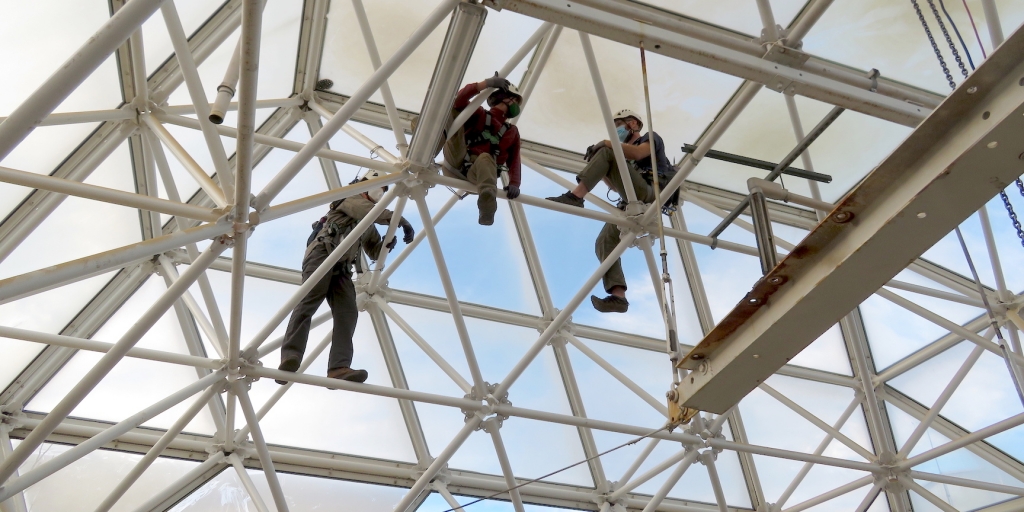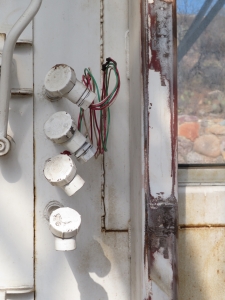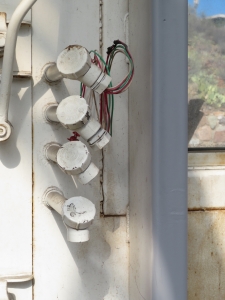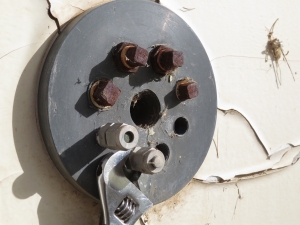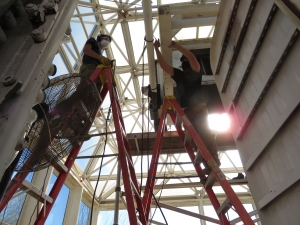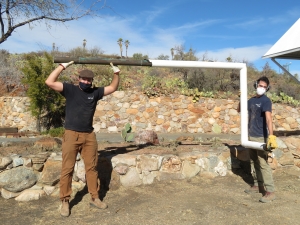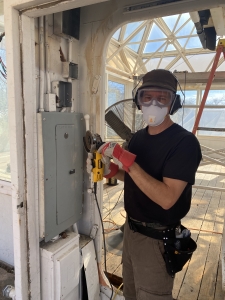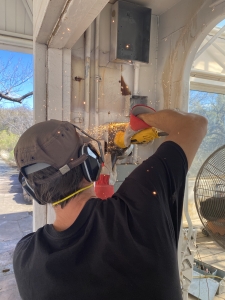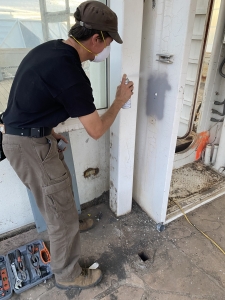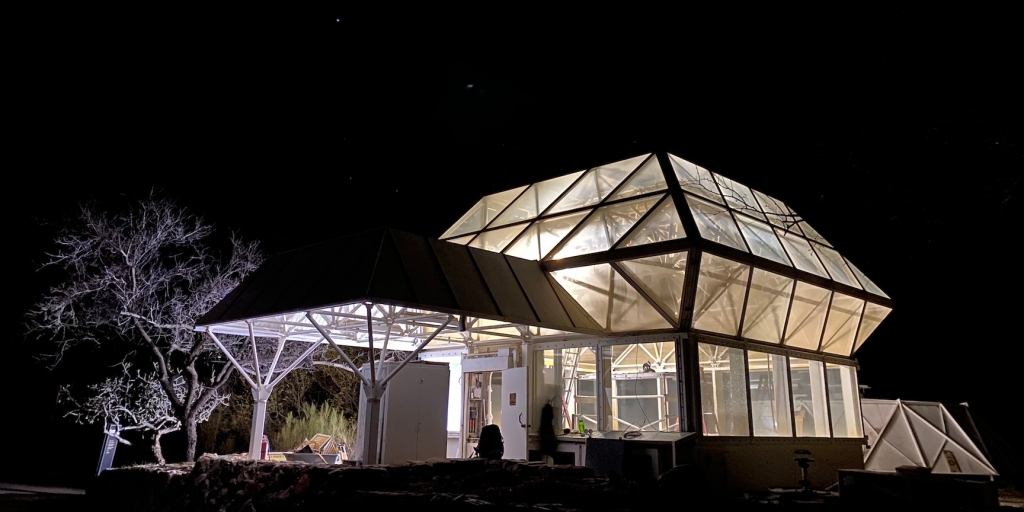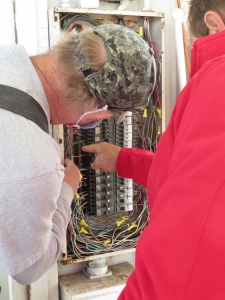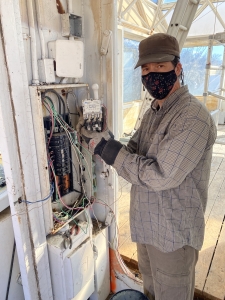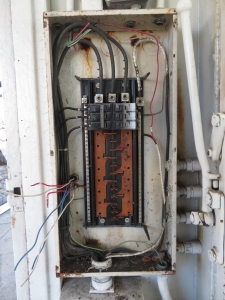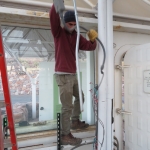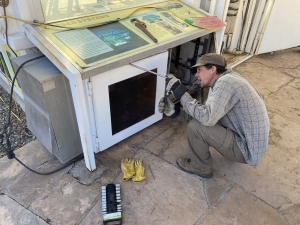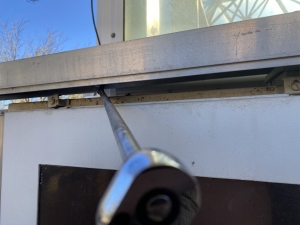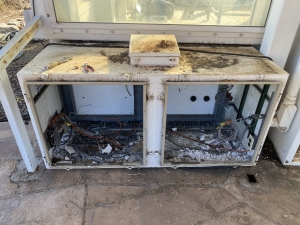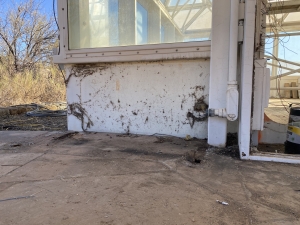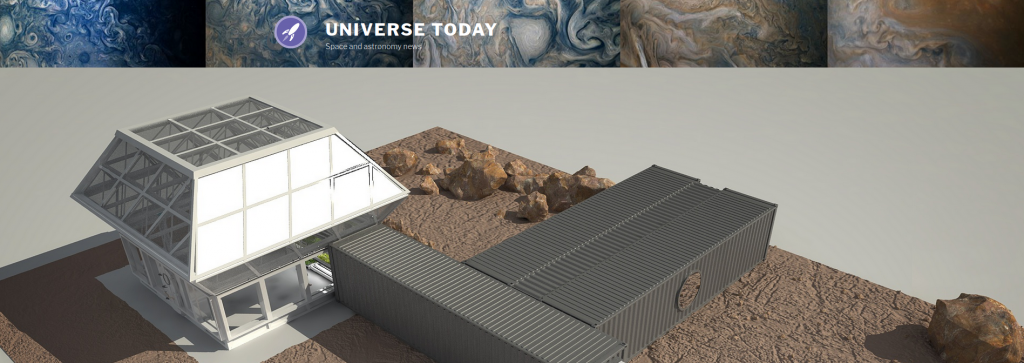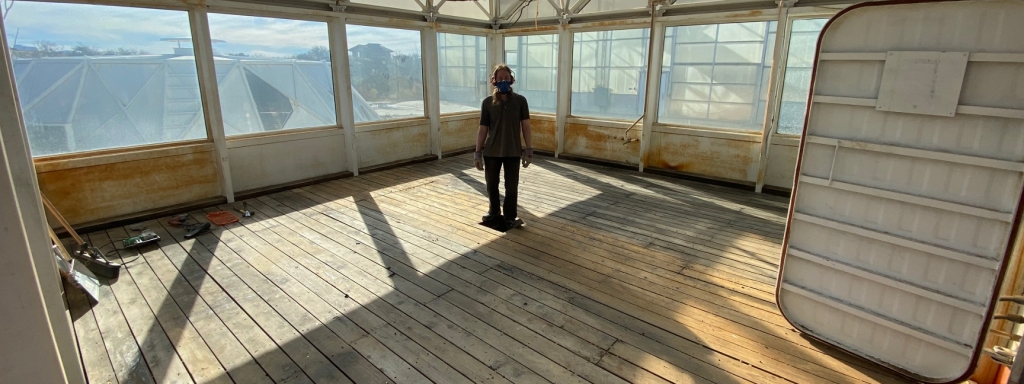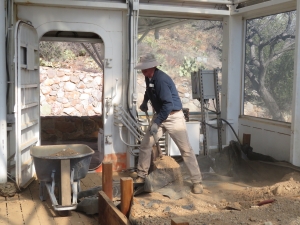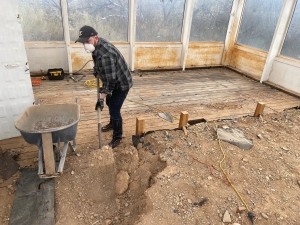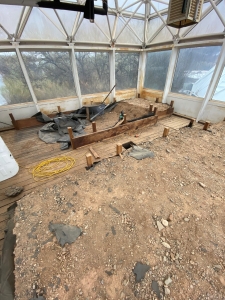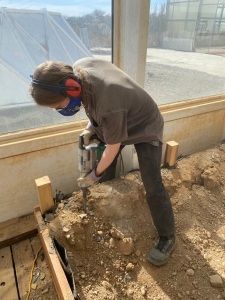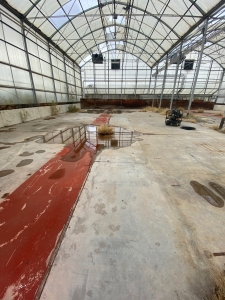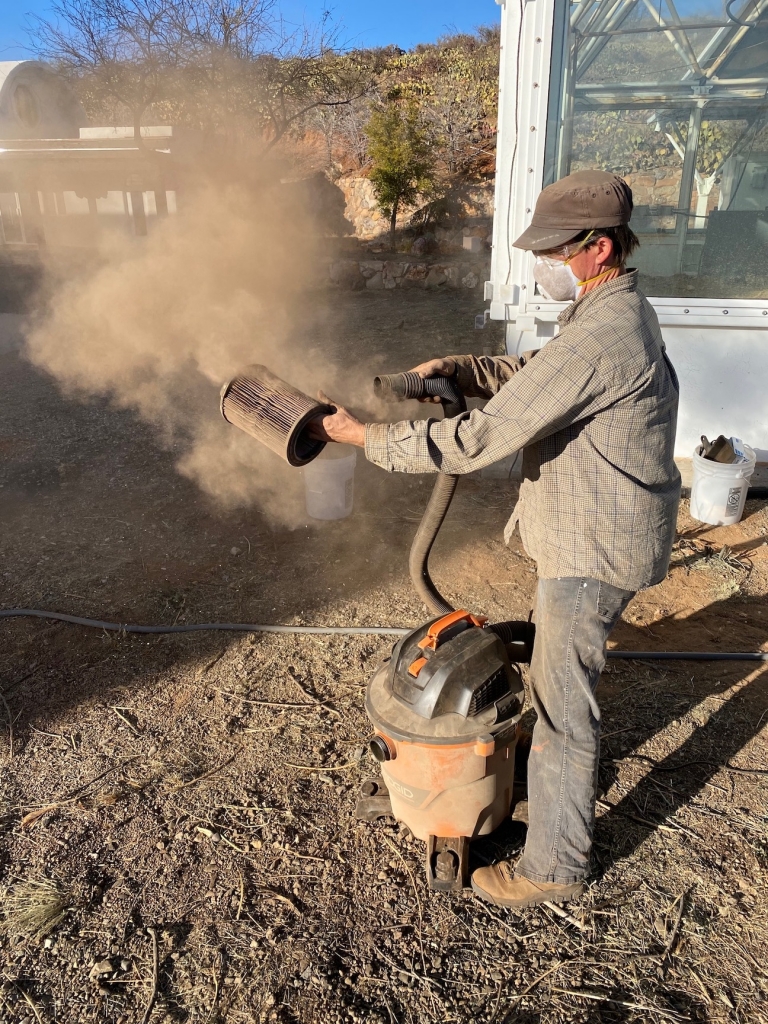SAM Construction – On orbital sanding
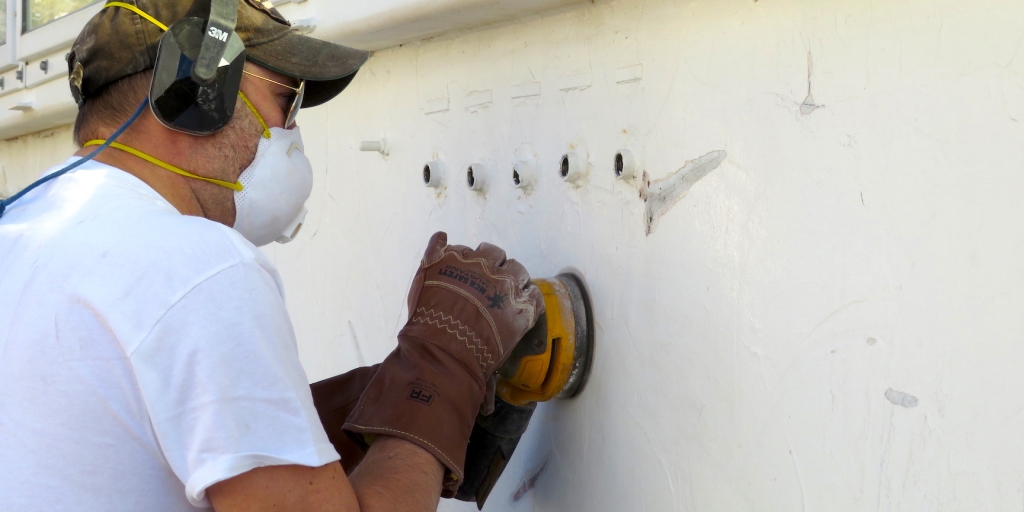
Dr. Cameron Smith from Portland State University has arrived to Biosphere 2 and SAM. Cameron is co-founder of Pacific Space Flight and Smith Aerospace Garments and will be delivering two pressure suits to SAM this spring. For now, Cameron is here to work along side Kai, Trent, and the Biosphere staff on the transformation of the Test Module into SAM.
The lower, exterior steel wall of SAM has held up remarkably well. Given that it yet holds the original paint and seals from 1987, there were only limited flaking and chips. The challenge was to identify loose areas of paint, remove, and then feather the edges down to the bare steel. Cameron was able to complete three sides of the exterior, some 240 sq-ft while Trent and Kai worked to safely lower the steel I-beam platform that until just a few days ago, held the massive heat exchanger.



